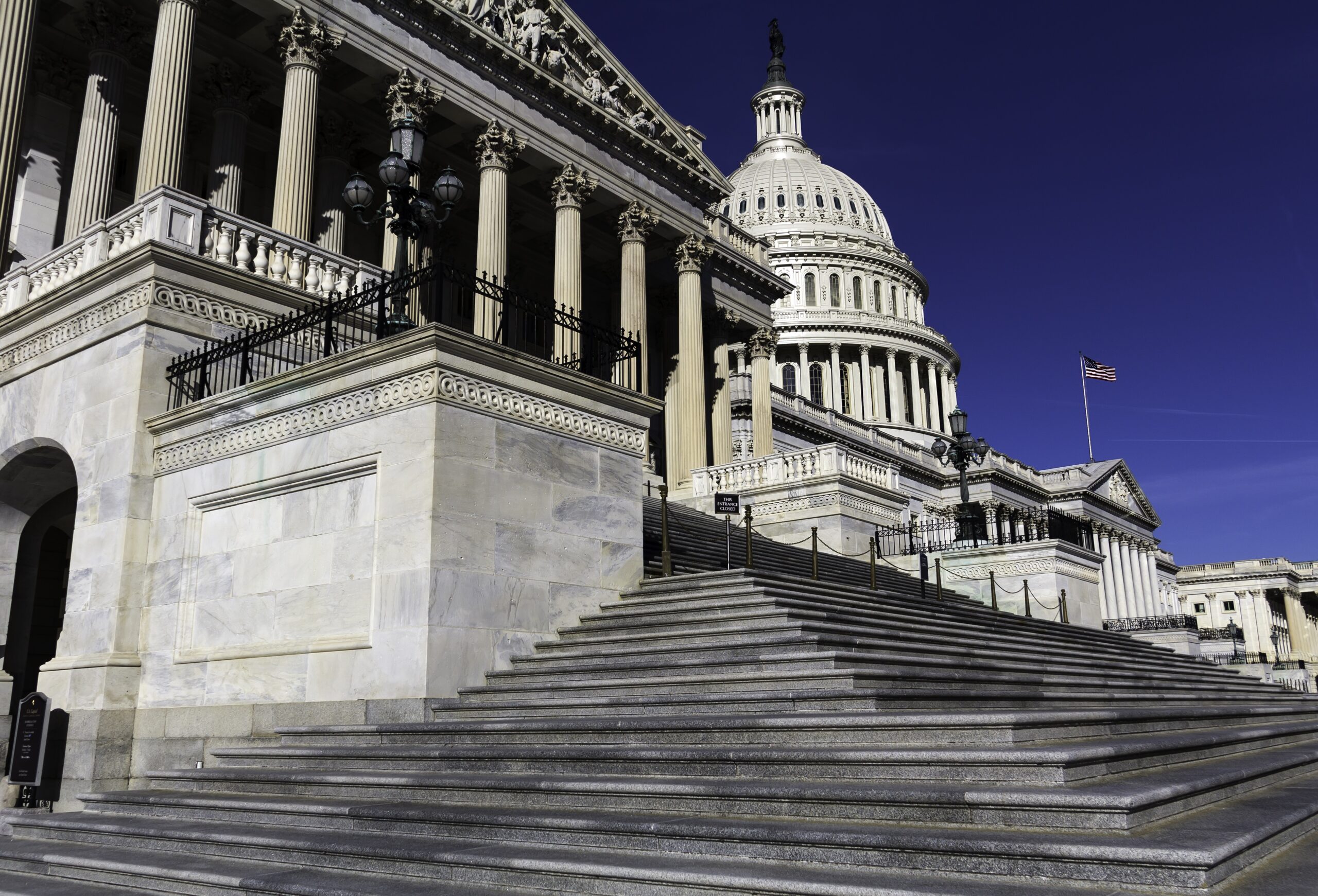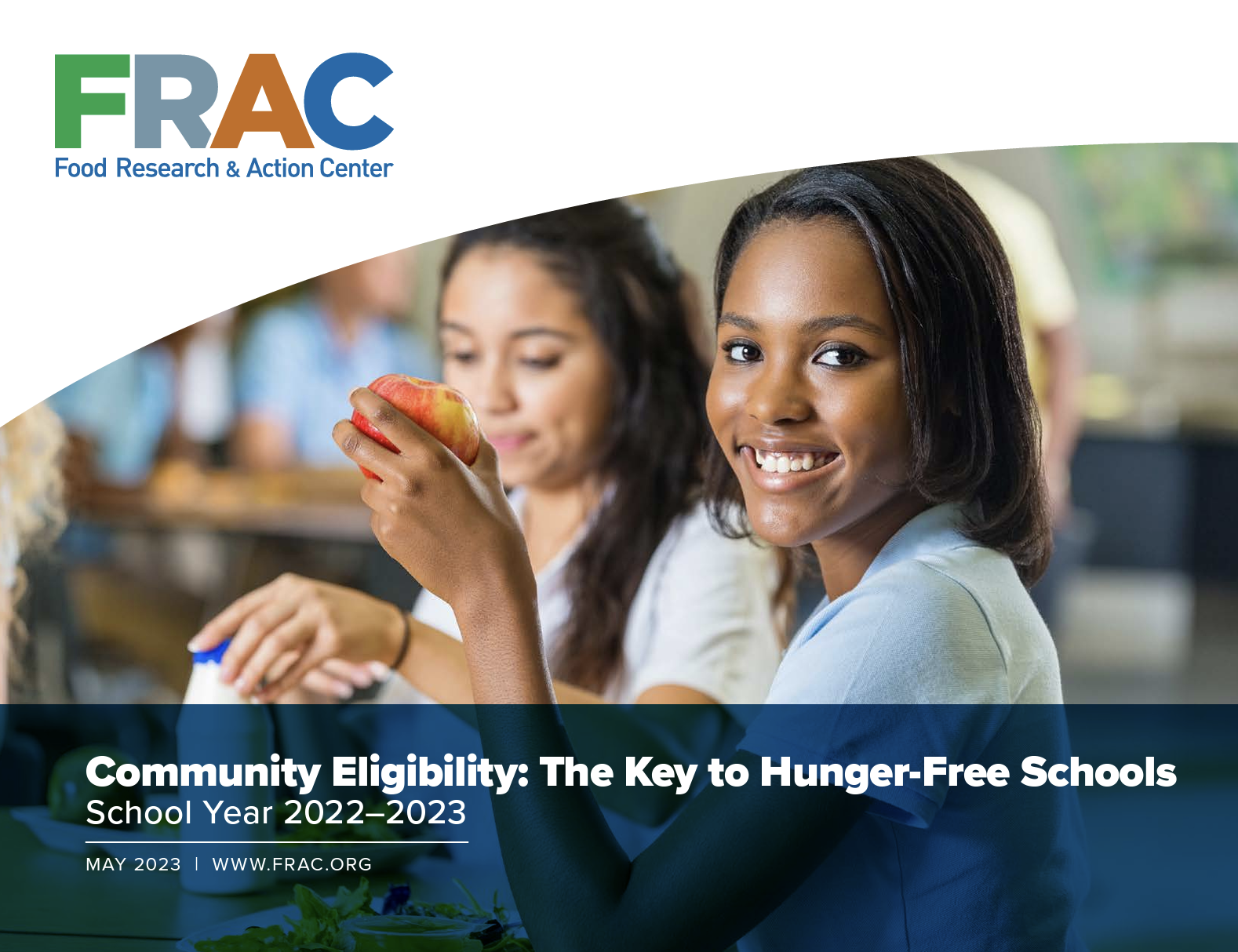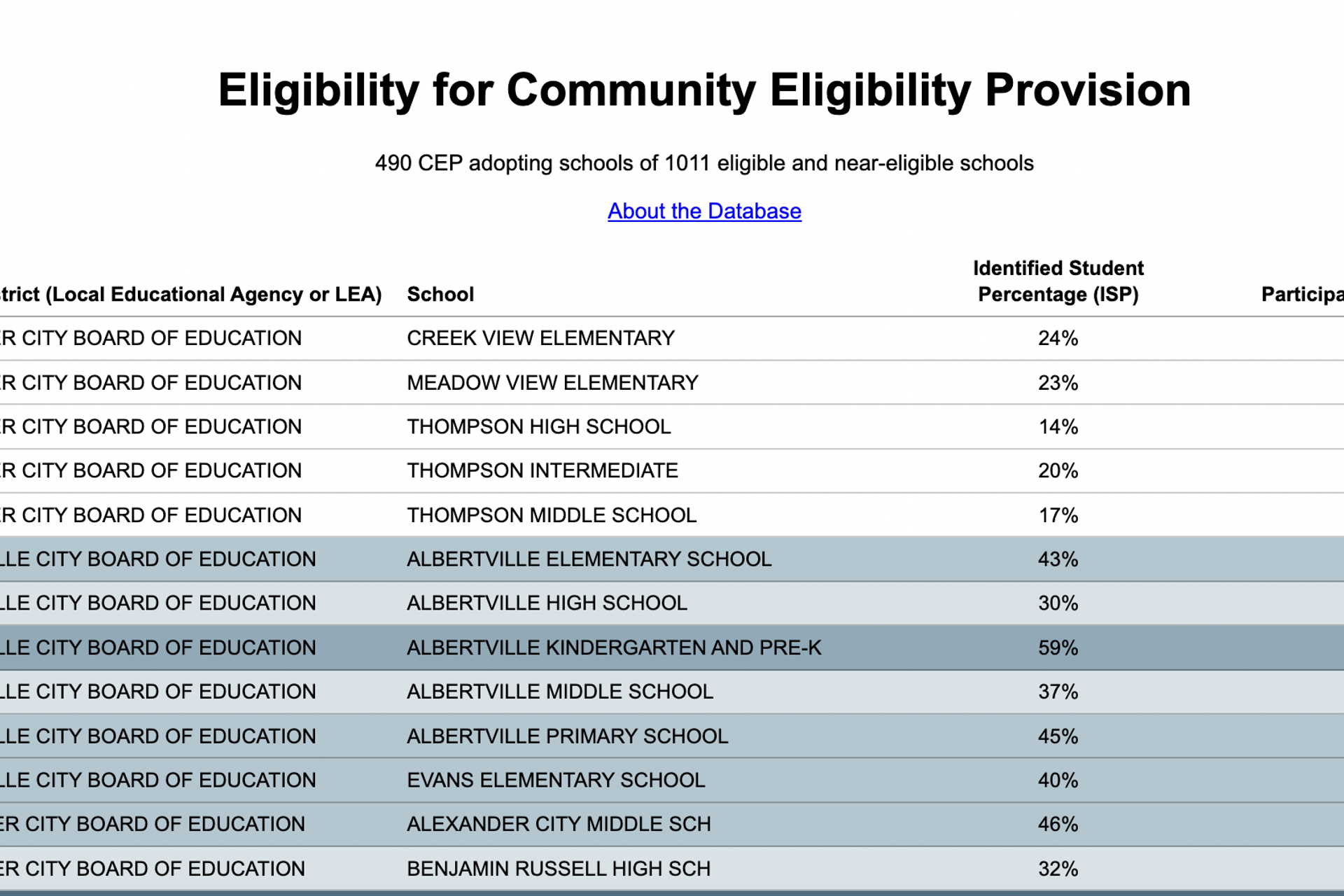More than 23 million children attending high-poverty schools had access to healthy school meals at no charge through the Community Eligibility Provision (CEP) during the 2023–2024 school year, according to FRAC’s latest report, Community Eligibility: The Key to Hunger-Free Schools.
This report analyzes community eligibility adoption—nationally and for each state and the District of Columbia—in the 2023–2024 school year.
Key Findings
-
- 7,717 school districts – 74.3 percent of those eligible – adopted CEP in one or more schools in the 2023–2024 school year.
- 1,298 additional school districts – 20.2 percent – implemented CEP compared to the prior school year.
- 47,766 schools adopted CEP in the 2023–2024 school year.
- School adoption of CEP increased by 7,531 schools – 18.7 percent – from the prior school year.
- In the 2023–2024 school year, over 23.6 million students attended CEP schools, up from 19.9 million in the 2022–2023 school year.
- One out of every two schools that operated the National School Lunch Program in 2023–2024 used CEP to offer healthy school meals to all of their students.
What Is The Community Eligibility Provision?

The Community Eligibility Provision (CEP) allows high-need schools to offer breakfast and lunch at no charge to all students. CEP is a key step towards Healthy School Meals for All – offering free school breakfast and lunch to all students, regardless of their household income.
- How are community eligibility schools reimbursed?CEP schools don’t collect school meal applications; instead, they are reimbursed for a percentage of meals served via a formula based on the identified student percentage (ISP), which is the percentage of students who are directly certified for free school meals without an application due to participation in another means-tested program, like the Supplemental Nutrition Assistance Program (SNAP).
Identified students are a subset of those eligible for free and reduced-price school meals. For that reason, a multiplier of 1.6 is applied to the ISP to calculate the percentage of meals reimbursed at the federal free rate. The remainder of meals served are reimbursed at the lower, federal paid rate.
- Which schools can participate?Any school district, group of schools in a district, or individual school with 25 percent or more “identified students” is eligible to participate. Identified students are comprised of students certified for free school meals without an application.

FRAC’s CEP Database
Search FRAC’s CEP database to determine which schools in your community or state are eligible for CEP, and which eligible schools are participating in CEP. The database holds data for 50 states and the District of Columbia for the 2023–2024 school year.
CEP Adoption Over Time
CEP was established in the Healthy, Hunger-Free Kids Act of 2010, and became available nationwide in the 2014–2015 school year. CEP adoption has grown tremendously over the last decade, with one out of every two schools implementing CEP in the 2023–2024 school year. State policies supporting CEP and Healthy School Meals for All, as well as Medicaid Direct Certification, have been instrumental in increasing CEP adoption over the last year.

CEP Offers Wide-Ranging Benefits
- Combats childhood hunger
- Increases school meals participation
- Eliminates stigma and school meal debt
- Reduces administrative burdens
- Improves efficiencies in the cafeteria
Ten-Year Trend in Schools Participating in CEP

Policy Recommendations

Yet many newly eligible schools are unable to participate without additional funding due to the inadequate multiplier that determines the level of federal reimbursement that CEP schools receive. As more schools become eligible, focused efforts must be made to ensure that eligible schools have the financial support, technical assistance, and resources needed to successfully implement CEP.
In order to ensure that all eligible schools are able to successfully implement CEP, Congress must increase the multiplier from 1.6 to 2.5, as proposed in the School Hunger Elimination Act (S. 4525) and the School Meals Expansion Act (H.R. 2567).

Community Eligibility: The Key to Hunger-Free Schools 2024
Read the report
Community Eligibility Report 2023
Read last year's report
See if your school is eligible!
CEP Database
